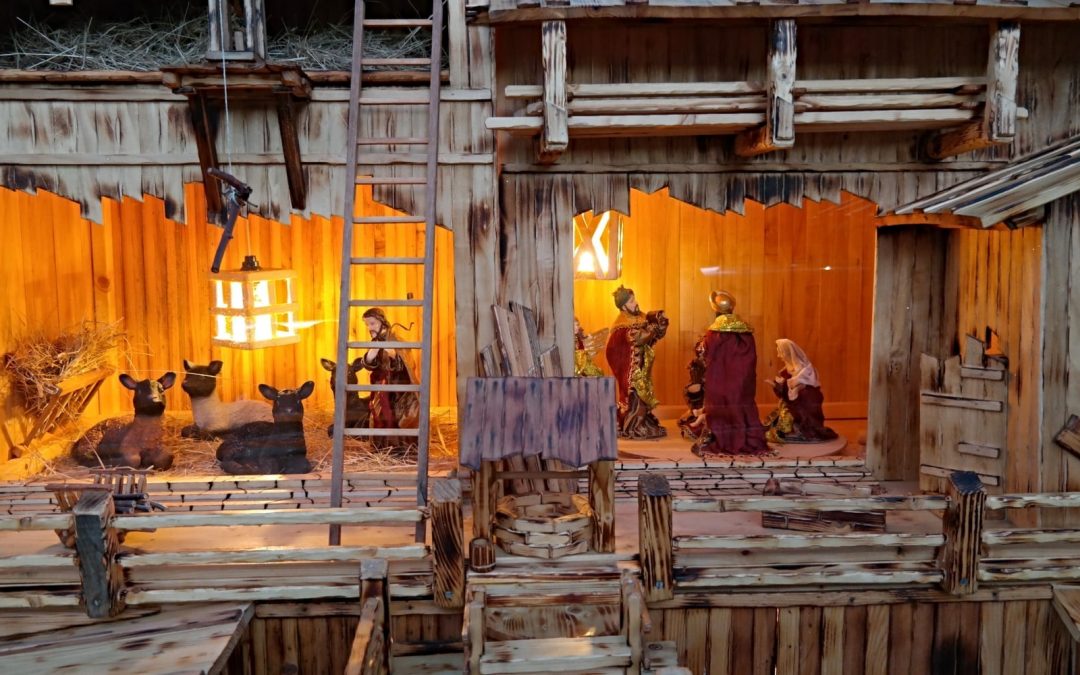The images of Christmas in the biblical testimony offer a subtle, yet effective invitation.
They urge us to embrace a perspective that sometimes gets overshadowed in our rousing choruses of “Joy to the World” and “Angels We Have Heard on High.”
To be sure, the narratives in Matthew and Luke are there to encourage celebration of the divine sanction of the transformation experienced by the early Christians in the way they saw themselves and their faith.
But there is a consistent theme woven into the birth stories, particularly Luke’s, that has implications for the ongoing stewardship of the gift of incarnation.
When we begin to notice it, it is hard to miss the emphasis on the “lowliness” of what is portrayed in the narrative.
Mary is a young girl, very low on the prestige scale of her culture, who celebrates the Lord’s embrace of her lowliness in what we know as the Magnificat (Luke 1:46-55).
The expectant couple travel to fulfil a civic obligation and are excluded from primary lodging by overcrowding, finding temporary shelter with the animals.
The anticipated birth occurs in that temporary setting, and its significance is announced to another “least likely” audience of shepherds.
The heavenly host’s celebration of “glory to God in the highest” tends to overshadow the humble images of the disclosure.
Matthew’s image of the eastern magi adds another “outside the boundary of expectation” touch to the story.
The delicate balance of “lowliness” and significance that is built into the Christmas imagery echoes themes found in the prophetic foreshadowing of the fulfillment of the covenant promise.
As the understanding of that promise evolves and matures, the tendency to seek and hope for power and greatness is tempered by an embrace of goodness and justice, where the arena of God’s work is experienced among the ordinary, even the helpless, the marginalized and the outsiders.
A clear expression of this earlier emphasis is in the servant poems of the sixth century Isaiah (42:1-4, 49:1-6, 50:1-4 and 52:13 to 53:12), among which is the unique application of the title “Christos” to Cyrus, King of Persia, the agent of God’s liberation of the exiles (Isaiah 45:1).
If a significant part of the Christmas stories is an invitation to embrace and live their inclusive humility, how do we in a world so far removed respond to that?
Let me suggest two ways that seem to be implied in the invitation and that have to do with our ongoing stewardship of the gift of Christmas.
- The images suggest that God enters into the “ordinariness” of human experience and partners with it to pursue a creative and redemptive agenda of what the world and its people can continue to become.
Our “Godlikeness” – the “imago dei” of Genesis 1:26-27 – seems to lie not so much in our relative power or helplessness, but in our willingness to be present and to partner with the helplessness of others.
That’s what the biblical testimony consistently says that God does.
- The second implication has to do with our theology and its exclusive tendencies.
In our effort to preserve and share the special gift of incarnation, received as a disclosure in concrete terms of how the nature of “Godlikeness” is lived out, we develop ways of understanding and interpreting its meaning that tend to shift from describing the gift and its meaning to defining it.
What begins as an authentic and sincere effort to point to and share a transformative experience can become a restrictive template used to measure the legitimacy of subsequent experience.
What is intended to be a window through which one might see a new reality becomes an access gate through which one must pass in order to see it.
In the Christian tradition, the invitation to follow Jesus becomes a mandate to believe the right things about Jesus.
There is an invitation here to a kind of theological humility that seeks to resist the tendency to think that because the mystery of God’s presence has been experienced in a particular way, then all experiences of God’s presence must be like that.
We know from our ecclesiastical history that the humble gratitude of reception of grace can easily become the proud arrogance of its possession.
The humility of reception of a gift is easy to see and affirm. The ongoing humility of faithful stewardship of that gift is not as easy.
Our annual visit to Bethlehem is a good reminder of the importance of both.
Professor emeritus of religious studies at Mercer University, a member of Smoke Rise Baptist Church in Stone Mountain, Georgia, and the author of Keys for Everyday Theologians (Nurturing Faith Books, 2022).


